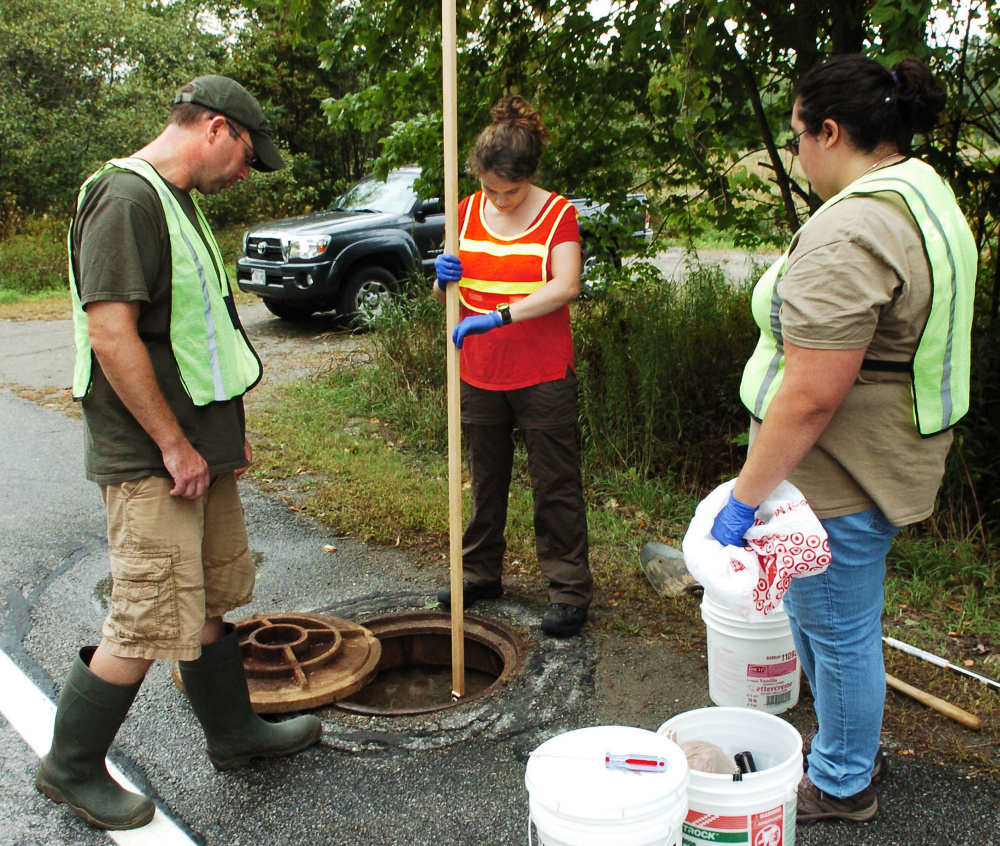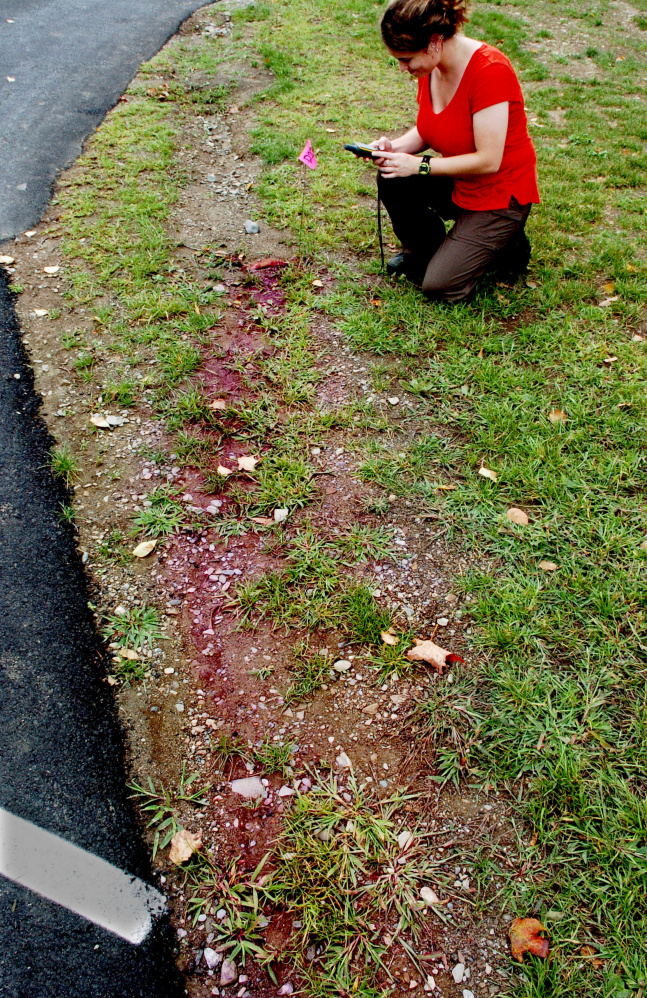UNITY — An undergraduate research project is probing whether surface water is seeping into a sewer line along Quaker Hill Road used by Unity College and, if so, how much.
Kevin Spigel is conducting the project through his surface and groundwater hydrology class of eight students at Unity College, where he is a professor of geoscience and director of the Undergraduate Research Program.
“I’m a strong proponent for undergraduate research projects,” Spigel said Monday afternoon.
The project is also benefiting the Unity Utilities District, where Spigel is president. “With any waste water operator, you don’t want water added to (the sewer system),” he said, because additional water would increase demand on the system. Surface water run-off caused by rainfall should go into the stormwater drains and out into a retention basin at the bottom of the hill, he said.
Emily Newell, chairwoman of the Unity Select Board, said she appreciates the work of the project.
“Not only is it a hands-on learning experience for the students, but it is a service for the community to monitor the condition of the sewer,” she said in an emailed statement. “The sewer is a significant asset to the development of the downtown area.”
The site operator of the pump station at the bottom of the hill noticed an increased flow or pump time during or after heavy rainfalls, said Alyssa Silvia, a junior at Unity College studying earth and environmental science. This may suggest that surface water is seeping into the sewer line through the joints, though Spigel said the Utilities District knows that no sewage water is leaking out of the system.
Silvia and Sally Carullo, a senior also majoring in earth and environmental science, both went out to a manhole on Quaker Hill Road at 2 p.m. Monday to take depth measurements and samples of the sewer water. Students have been going to the site at 2 a.m. and 2 p.m. every day for the past two weeks to take depth measurements, Spigel said. The measurements will establish a baseline for low flow and high flow limits.
The two students, along with Spigel, pried open the manhole with a shovel and a screwdriver and then lowered a long board in until it reached the bottom. Silvia measured the part of the board that was wet, which came to 33 millimeters.
“Later in class we’ll introduce them to quantitative calculations, and they’ll calculate the flow rate” Spigel said.
Silvia then lowered a water sampler bucket down to the sewer line to get a water sample. The water was poured through a screen to take out particles. Monday was the second day they had taken water samples, as they had just set up 16 red dye packs around campus, Spigel said.
“We needed rain in order to get the dye to disperse,” Silvia said.
Spigel said the students will soon stop sampling and measuring every day and the project will become more weather-driven.
Later on, Spigel said the students will use a fluorometer to measure the concentration of the red dye, or rhodamine, in the water. If the surface water is seeping into the sewer line, the red dye should be visible and measurable in the samples.
This isn’t the first project the Utilities District has collaborated on with Unity College students. Carullo and Silvia both said they appreciate getting to work on projects related to their field before graduating.
“We are outside in the field a lot, and it’s very helpful. It’s pretty much hooked me a job in graduate school for the next two years,” Carullo said. “We get to grad school or our jobs, and we’re pretty much trained.”
Silvia spoke similarly, saying that many positions in the workforce require students to already have a certain amount of experience at the end of their college years.
“It also helps us think outside the box,” she said. For example, she said the class had to come up with the best way to create the dye packs that would keep them in place and also work with the run-off water.
The students will present the results of the project at a student conference at the end of the semester, and the results will be sent to the Unity Utilities District. Hopefully, Spigel said, surface water isn’t seeping in, but if it is, then the next step is to determine where the water comes from.
The college and the Utilities District did a cost-share to buy the equipment for the project with Unity College paying for additional equipment that the department didn’t already have, like a fluorometer, and the Utilities District paying for the rhodamine.
Madeline St. Amour – 861-9239
mstamour@centralmaine.com
Twitter: @madelinestamour
Send questions/comments to the editors.





Success. Please wait for the page to reload. If the page does not reload within 5 seconds, please refresh the page.
Enter your email and password to access comments.
Hi, to comment on stories you must . This profile is in addition to your subscription and website login.
Already have a commenting profile? .
Invalid username/password.
Please check your email to confirm and complete your registration.
Only subscribers are eligible to post comments. Please subscribe or login first for digital access. Here’s why.
Use the form below to reset your password. When you've submitted your account email, we will send an email with a reset code.